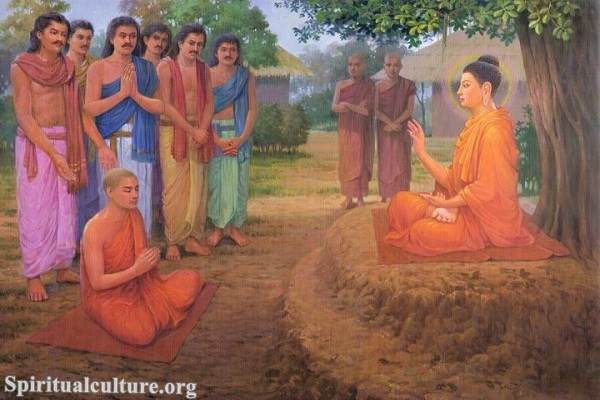In a world filled with both suffering and beauty, many seek a path that nurtures love without conditions and care without boundaries. For Buddhists, this path often begins — and blossoms — through meditation on compassion.
But what does it truly mean to meditate on compassion? Is it merely an act of mental repetition, or does it reach into something deeper, something transformational?
Spiritual Culture invites you into the heart of Buddhist compassion meditation — a practice that doesn’t just soothe the mind, but awakens a profound sense of interconnectedness with all beings.
In this article, we will explore:
- What compassion means in Buddhism
- The foundational meditations that cultivate it
- The inner shifts that arise through these practices
- How this ancient method speaks to our modern world
Let’s journey into the quiet space where love becomes a practice — and compassion becomes a way of life.
What Is Compassion in Buddhism?
Compassion as the Heart of Awakening
In Buddhism, compassion (karuṇā) is not just a feeling — it’s an awakened response to the suffering of others. It is the wish, born of clarity and kindness, that all beings be free from pain and distress.
The Buddha said:
“As a mother would risk her life to protect her child, her only child, even so, let one cultivate a boundless heart towards all beings.”
— Metta Sutta (Sutta Nipata 1.8)
Here, compassion is limitless. It is not reserved for family, friends, or even humans alone. It flows equally to strangers, enemies, and all sentient life.
The Relationship Between Compassion and Wisdom
In Buddhist thought, compassion without wisdom may become sentimentality, and wisdom without compassion may become cold detachment.
Together, they form the wings of awakening. In Mahayana Buddhism especially, the bodhisattva — the being who delays personal enlightenment to help others — embodies this union.
The Foundation: Loving-Kindness (Metta)
Before diving into specific compassion practices, it’s essential to understand metta, or loving-kindness. This is often the starting point in Buddhist meditation.
The Metta Meditation
This practice involves repeating well-wishing phrases, usually beginning with oneself and then expanding outward:
May I be happy.
May I be safe.
May I be healthy.
May I live with ease.
Then the meditator extends these wishes to:
- A loved one
- A neutral person
- A difficult person
- All beings everywhere
This widening circle helps dissolve the barriers of self-centeredness, making the heart supple and ready for deeper compassion work.
Compassion Meditation (Karuna Bhavana)
The Structure of Compassion Practice
While loving-kindness fosters general goodwill, karuna bhavana — the cultivation of compassion — focuses specifically on the wish to relieve suffering.
The practice typically follows this sequence:
- Visualize a suffering being — someone real or imagined.
- Feel empathy — allow your heart to touch their pain.
- Generate the wish — “May you be free from suffering.”
- Repeat and expand — gradually include more beings in your circle of compassion.
This is not an intellectual exercise. It is an emotional training, reshaping how we relate to pain — both others’ and our own.
A Compassion Meditation Example
Sit in stillness. Bring to mind a person who is going through a hard time. Imagine their face, their burdens. Silently say:
“I see your pain. I wish you ease.
May your suffering lessen.
May you be held in compassion.”
Then, expand. Think of others suffering in similar ways — the lonely, the sick, the grieving — and offer the same wish to them.
Tonglen: Breathing in Pain, Breathing Out Relief
A Tibetan Buddhist Practice
In Tibetan Buddhism, a powerful compassion practice is Tonglen — meaning “giving and taking.”
It may sound counterintuitive: you breathe in the suffering of others, and breathe out relief, joy, healing.
Why?
Because it reverses the ego’s usual pattern of avoiding pain and grasping pleasure. It trains the heart to embrace suffering — not be overwhelmed by it.
Practicing Tonglen Step-by-Step
- Sit comfortably and become aware of your breath.
- Bring to mind someone who is suffering.
- As you inhale, imagine taking in their pain, like a dark cloud.
- As you exhale, send back light, love, peace, like a warm breeze.
- Continue with this breathing pattern, expanding to include more beings.
Tonglen is not about self-sacrifice. It is about courageous connection — breaking the walls of separation with each breath.
The Four Immeasurables: A Framework for Compassion
Compassion doesn’t stand alone in Buddhism. It is part of the Four Brahmaviharas (or Four Immeasurables):
- Metta — Loving-kindness
- Karuna — Compassion
- Mudita — Sympathetic joy (joy in others’ happiness)
- Upekkha — Equanimity
Balancing Compassion with Equanimity
Sometimes compassion can become overwhelming. That’s why equanimity (upekkha) is key. It offers the spaciousness to care without attachment, to help without burning out.
One might say:
“I care deeply for your suffering — and I recognize that I cannot control all outcomes.”
This balance is not indifference, but wise love — rooted in deep understanding.
The Fruits of Compassion Meditation
Inner Transformation
Regular meditation on compassion brings radical shifts within the practitioner:
- Less reactive anger
- Greater patience
- Softened judgments
- A gentler inner voice
As one monk said, “With each act of compassion, I remember who I really am.”
A Changed Way of Seeing
Eventually, compassion becomes not just a momentary feeling, but a way of seeing the world. Instead of labeling others as threats, competition, or strangers, one begins to see:
“This too is a being who longs for happiness and fears pain — just like me.”
This perspective dismantles othering. It melts the illusion of separateness.
Applying Compassion Meditation to Daily Life
Compassion Beyond the Cushion
True meditation doesn’t end when we rise from the mat. In Buddhism, the goal is not to escape the world, but to re-enter it with clarity and care.
Ways to bring compassion meditation into daily life:
- In conflict: Pause and silently wish the other person well.
- In witnessing suffering: Don’t turn away — turn toward, with warmth.
- In self-talk: Soften your inner critic; treat yourself as you would a hurting friend.
- In social action: Let compassion guide your activism, not anger.
“Engaged Buddhism”
Thich Nhat Hanh, a Vietnamese Zen master, coined the term “Engaged Buddhism” — a way of applying mindfulness and compassion to real-world suffering, such as poverty, war, racism, or climate injustice.
He taught:
“Compassion is a verb.”
Meditation trains the heart. Life gives it the test.
Sacred Texts on Compassion
Throughout Buddhist scriptures, compassion is honored as a supreme quality. Some teachings include:
- The Karaniya Metta Sutta – A classic text of loving-kindness and compassion
- The Lotus Sutra – Highlights the Bodhisattva’s deep vow to save all beings
- The Dhammapada (Verse 223):
“Conquer anger with love, evil with good,
Meanness with generosity, and lies with truth.”
Each teaching points to the same truth: a liberated heart is a loving heart.
Reflect and Reimagine
To meditate on compassion is not to run from the world — but to embrace it more deeply, more courageously, more tenderly.
As Spiritual Culture, we invite you to pause, breathe, and try one simple act of compassion today — perhaps not toward someone far away, but toward yourself.
Close your eyes for a moment, and silently say:
“May I be free from suffering.
May I meet this day with kindness.
May I open my heart to others.”
This is where it begins — with one breath, one intention, one step.
And in that step, the world quietly changes.




